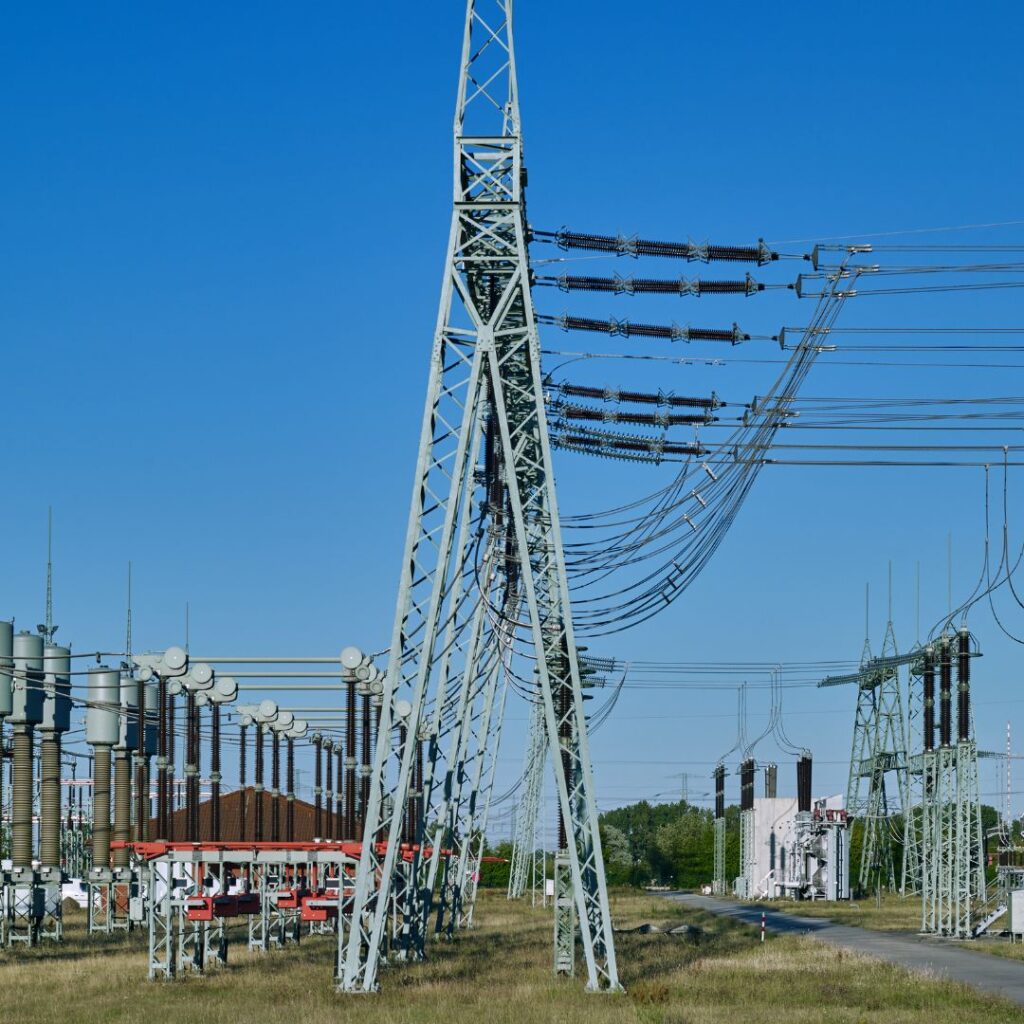For any power utility, crafting a master plan is a critical step in ensuring reliable services, optimal resource allocation, and strategic growth. Master planning plays a pivotal role in defining the future trajectory of a utility, outlining its short and long-term goals, and establishing a roadmap to achieve them.
However, traditional planning methods are increasingly falling short in today’s dynamic and complex energy sector.
This is where technology steps in.
Master planning software is emerging as a game-changer in power utility operations, replacing outdated manual processes with data-driven, automated, and real-time planning solutions. Cutting-edge technology such as the Transcend Design Generator is empowering power utilities to streamline their operations, enhance efficiency, and bolster reliability, effectively ushering in a new era of operational excellence.
In this guide, we’ll take a closer look at how master planning software is revolutionizing power utility operations, and explore the benefits of incorporating it into your organization’s planning processes.
Challenges in Power Utility Management
As with any industry, the energy sector has its own unique set of challenges. This includes:
Aging Infrastructure and Maintenance Concerns
Aging and deterioration are a part and parcel of any infrastructure, and power utilities are no exception. In fact, according to a report by the American Society of Civil Engineers (ASCE), the average age of electricity transmission lines in the US is 25 years or older, and approximately 60% of distribution lines are over 30 years old. As these assets continue to age, maintenance costs skyrocket, while reliability decreases.
Fluctuating Demand and Supply Dynamics
Power utilities need to constantly monitor and manage the ever-changing demand and supply dynamics of energy consumption. With the rise of renewable energy sources, such as wind and solar power, there is a need for flexible planning to accommodate variable production levels. Also, unpredictable events like extreme weather conditions can significantly impact demand patterns.
Features and Functionality of Master Planning Software
Master planning has always been an essential function for power utilities.
In the past, master plans were created using manual methods such as spreadsheets and pen-and-paper calculations. However, with the advancements in technology, master planning software such as the Transcend Design Generator has become a valuable tool for utilities looking to streamline their processes and optimize their operations.
Here are a few features and functions you should expect from your master planning software:
Load Forecasting and Demand Analysis
Master planning software leverages historical data and advanced algorithms to forecast energy demand accurately. This allows you to predict future load requirements, plan for necessary infrastructure upgrades, and optimize their resource allocation. With this feature, you can ensure that your utility is prepared for any fluctuations in demand so you are always providing reliable and uninterrupted service to your customers.
By leveraging the capabilities of the Transcend Design Generator (TDG) as your master planning software, you can optimize load forecasting and demand analysis. TDG uses the best decision algorithms, input data, and industry standards to get the most accurate predictions possible.
With TDG as a master plan design software in your arsenal, you can significantly enhance the quality and efficiency of load forecasting and demand analysis.
Asset Management and Predictive Maintenance
Master planning software also helps utilities manage their assets more efficiently. Through real-time data analytics, the software can identify potential maintenance issues before they escalate, reducing downtime and saving on repair costs. It also enables you to plan for asset replacements and upgrades in advance, ensuring a smoother transition without any sudden disruptions to services.
Integration With SCADA Systems for Real-Time Monitoring
SCADA (Supervisory Control and Data Acquisition) systems are used by utilities to monitor, control, and analyze their operations in real-time. Master planning software can integrate with these systems, allowing for a more holistic approach to utility management. This integration enables you and your team to make informed decisions based on real-time data, improving efficiency and reliability.
Benefits of Implementing Master Planning Software
Investing in master planning software offers a range of benefits for power utilities, including:
Enhanced Operational Efficiency and Cost Savings
Saving on costs and sticking to a budget is a top priority for any organization, and power utilities are no exception. Master planning software can help identify areas of cost-saving opportunities through better resource allocation, accurate load forecasting, and efficient asset management. This leads to enhanced operational efficiency and significant cost savings.
Improved Reliability and Outage Management
With real-time data monitoring and predictive maintenance capabilities, master plan design software helps utility owners and urban designers such as yourself manage their infrastructure more effectively. It minimizes the risk of unexpected failures and outages, ensuring that customers receive reliable and uninterrupted service.
Better Decision-Making Through Data-Driven Insights
As utility owners or urban planners, you are constantly making important decisions that impact the overall efficiency and success of your organization. Urban planning software provides valuable insights and data-driven recommendations to help you make informed decisions. This allows for proactive planning and better management of resources, resulting in improved performance and customer satisfaction.
Transcend Design Generator (TDG) is a powerful urban planning software that encapsulates all these benefits. It’s equipped with robust decision-making algorithms and an extensive database, allowing you to reduce costs and improve reliability across your operations.
Selecting the Right Master Planning Software

Now, it’s time for us to address the elephant in the room – how do you choose the right master planning software for your utility? Here are a few key factors to consider:
Scalability
Let’s start with scalability. As your utility grows and evolves, your urban planning software should be able to adapt and accommodate these changes. Look for a solution that offers flexibility and scalability to meet your expanding needs. For example, Transcend Design Generator can handle large-scale master plans, making it an ideal choice for utilities of any size. Therefore, choose a software that can grow with your utility.
Customization
Every utility has unique needs and requirements, so it’s essential to select a master planning software that can be customized to fit your specific needs. This could include tailoring algorithms, reports, or dashboards according to your preferences. Choose a solution provider who is willing to listen and work with you to provide customized software that meets your utility’s specific needs.
Ease of Integration
Your master planning software should integrate seamlessly with your existing systems, such as SCADA and outage management. This allows for efficient data sharing and avoids any disruption to your operations during the transition process. Make sure to choose a master plan design software that offers easy integration and provides support throughout the process.
Vendor Evaluation and Comparison
Lastly, it’s crucial to thoroughly evaluate and compare other urban mapping tools based on their features, pricing, customer support, and reputation in the industry. Don’t hesitate to reach out to other utility owners or operators for recommendations and reviews. Plus, conducting demos and trials can help you get a better understanding of how the software works and if it meets the needs of your development projects.
Transcend has established itself as a leading force when it comes to generative design software, earning a sterling reputation for its cutting-edge capabilities and user-friendly interface. Moreover, we offer the opportunity to try a demo before you decide, ensuring you understand and appreciate the full potential of our software before committing.
Implementation Process and Best Practices
Implementing a new system can be overwhelming, and master planning software is no exception. To ensure a smooth transition and successful implementation, here are some best practices to keep in mind:
Needs Assessment and Gap Analysis
Before implementing a master planning software, it’s crucial to conduct a thorough needs assessment and gap analysis of the current system of your electrical substation. This will help you identify any gaps or areas for improvement that the new software should address. It also allows you to set realistic goals and expectations for the implementation process.
Data Migration and System Integration
Next, make sure to plan and execute data migration and system integration carefully. Consult with your software vendor for guidance and support in this process to avoid any data loss or system disruptions. Take the time to clean up and organize your existing data to ensure a smooth transition.
Change Management and Training Strategies
Any change in an organization can face resistance from employees, so you must have a change management plan in place to ensure a smooth adoption of the new system. This could include providing proper training and support to employees, addressing any concerns or questions they may have, and continuously communicating the benefits and importance of the new software.
Addressing Cybersecurity Concerns
Cybersecurity has become a growing concern with the increasing reliance on technology in the utility industry. It’s essential to choose a master planning software that prioritizes security and takes necessary measures to protect your data.
Importance of Securing Critical Infrastructure
In the United States alone, the FBI’s Internet Crime Complaint Center (IC3) reported a record-breaking number of cybercrime complaints in 2022, with losses exceeding $2.7 billion. As an urban planner, you should leverage master planning software since the security of your critical infrastructure becomes paramount. Not to mention, a cyber attack on utility systems can have severe implications for public safety and the economy.
Implementing Encryption and Intrusion Detection Systems
To address cybersecurity concerns, it’s crucial to choose a master planning software that utilizes encryption and intrusion detection systems. Encryption ensures that your data is protected in transit and at rest, making it difficult for hackers to access sensitive information. Intrusion detection systems monitor network traffic and can alert you of any suspicious activity.
Additionally, make sure to choose a software vendor that provides regular updates and backups for your system. This helps ensure that any potential security vulnerabilities are addressed promptly, keeping your data safe and secure.
Future Trends in Power Utility Planning

As we look toward the future, a few key trends are emerging in power utility planning that will have an impact on master planning software:
AI and Machine Learning for Predictive Analytics
Artificial intelligence (AI) and machine learning are revolutionizing the power utility industry by enabling predictive analytics. This technology uses algorithms to analyze historical data and make predictions about future system performance, allowing operators to proactively identify and address potential issues before they occur.
Renewable Energy Integration and Microgrids
With the increasing focus on sustainability, more power utilities are integrating renewable energy sources into their systems. This presents a unique challenge for master planning software in effectively managing and optimizing the integration of these resources. Additionally, microgrids are becoming more prevalent, which requires careful planning and coordination to ensure reliable and efficient operation.
Regulatory Compliance and Reporting
As an electrical substation operator, you must comply with various regulations and reporting requirements set by government agencies. Choosing a master planning software that allows for easy and accurate compliance reporting can save time and resources in the long run.
Navigating Industry Regulations and Standards
Organizations such as the North American Electric Reliability Corporation (NERC) have set standards and regulations for power utilities to ensure reliable and secure operation. Master planning software can assist in navigating these requirements by providing data analysis and reporting capabilities.
Streamlining Compliance Through Software Solutions
Master planning software can also help streamline compliance reporting by automating data collection and analysis. This reduces the risk of human error and saves time for utility operators, allowing them to focus on other critical tasks. Plus, having all compliance data easily accessible in one central location can also make it easier for audits and inspections.
Financial Considerations and ROI
Not many asset and utility owners consider the financial benefits of master planning software. However, investing in the right software can have a significant impact on your bottom line.
Calculating Return on Investment (ROI) for Software Implementation
When it comes to calculating the Return on Investment (ROI) for master planning software implementation, it’s important to consider both initial costs and potential long-term benefits. Initial costs include the purchase price of the software, any necessary hardware upgrades, and the cost of implementation, including training staff to use the software effectively.
The potential benefits, on the other hand, can be more challenging to quantify but are essential for a complete ROI calculation. These benefits might include time savings due to increased efficiency, reduced downtime from more effective planning and management, or even new revenue opportunities resulting from more efficient operations.
To calculate the ROI, you subtract the initial investment from the gained value and then divide by the initial investment, as shown below:
ROI = (Gained Value – Initial Investment) / Initial Investment
Long-Term Cost Savings and Revenue Enhancement
Master planning software can also provide long-term cost savings and potential revenue enhancements. For instance, the software can reduce costs by improving efficiency and reducing waste. By optimizing operations and eliminating unnecessary steps, you can save significant amounts of time and resources.
In addition, the software can identify areas where you might increase revenue. For example, the software might provide insights into peak demand times, allowing you to adjust pricing accordingly. It might also identify areas of the grid that are underutilized, providing expansion opportunities.
Conclusion
As the energy sector continues to evolve, the importance of master planning software will only increase. By incorporating this technology into your utility operations, you can streamline compliance and reporting, enhance collaboration and communication, and ultimately, see a positive ROI.
So why wait? Take a step towards optimizing your master planning process and enhancing your utility’s performance with the Transcend Design Generator. Remember, failing to plan is planning to fail – so don’t let your utility fall behind.






